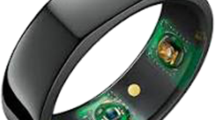Abstract
The monitoring of sleep patterns is of major importance for various reasons such as the detection and treatment of sleep disorders, the assessment of the effect of different medical conditions or medications on the sleep quality, and the assessment of mortality risks associated with sleeping patterns in adults and children. Sleep monitoring by itself is a difficult problem due to both privacy and technical considerations. The proposed system uses a combination of non-invasive sensors to assess and report sleep patterns: a contact-based pressure mattress and a non-contact 3D image acquisition device, which can complement each other. To evaluate our system, we used real data collected in Heracleia Lab’s assistive living apartment. Our system uses Machine Learning techniques to automatically analyze the collected data and recognize sleep patterns. It is non-invasive, as it does not disrupt the user’s usual sleeping behavior and it can be used both at the clinic and at home with minimal cost.




Similar content being viewed by others
References
American Academy of Sleep Medicine (2001) International classification of sleep disorders, revised: diagnostic and coding manual. American Academy of Sleep Medicine, Illinois
Boughorbel S, Bruekers F, Breebaart J (2010) Baby-posture classification from pressure-sensor data. In: ICPR, pp 556–559
Charles J, Everingham M (2011) Learning shape models for monocular human pose estimation from the microsoft xbox kinect. In: IEEE international conference on computer vision workshops (ICCV workshops), pp 1202–1208
Cover T, Hart P (1967) Nearest neighbor pattern classification. IEEE Trans Inf Theory 13(1):21–27
Cristianini N, Shawe-Taylor J (2000) An introduction to support Vector Machines: and other kernel-based learning methods. Cambridge University Press, Cambridge
Dunteman GH (1989) Principal components analysis. Sage Publications Inc., Thousand Oaks
Flores AE, Flores JE, Deshpande H, Picazo JA, Xie X, Franken R, Heller HC, Grahn DA, O’Hara BF (2007) Pattern recognition of sleep in rodents using piezoelectric signals generated by gross body movements. IEEE Trans Bio-med Eng 54(2):225
Foley D, Ancoli-Israel S, Britz P, Walsh J (2004) Sleep disturbances and chronic disease in older adults: results of the 2003 national sleep foundation sleep in america survey. J Psychosom Res 56(5):497–502. doi:10.1016/j.jpsychores.2004.02.010. http://www.sciencedirect.com/science/article/B6T8V-4CG6MR1-5/2/e6f128d71f0fcc69c302ec316c194a62
Jansen BH, Cheng WK (1987) Classification of sleep patterns by means of markov modeling and correspondence analysis. IEEE Trans Pattern Anal Mach Intell PAMI-9(5):707–710. doi:10.1109/TPAMI.1987.4767968
Jin Z, Lou Z, Yang J, Sun Q (2007) Face detection using template matching and skin-color information. Neurocomputing 70(4–6):794–800
Kinect-xbox.com. http://www.xbox.com/en-US/kinect. Accessed 26 Oct 2012
Li W, Zhang Z, Liu Z (2010) Action recognition based on a bag of 3d points. In: CVPR4HB10, pp 9–14
Liao W, Yang C (2008) Video-based activity and movement pattern analysis in overnight sleep studies. Proceedings 3(Conf 19):1774–1777
Marcos JV, Hornero R, Alvarez D, del Campo F, Zamarron C (2009) Assessment of four statistical pattern recognition techniques to assist in obstructive sleep apnoea diagnosis from nocturnal oximetry. Med Eng Phys 31(8):971
Ni H, Abdulrazak B, Zhang D, Wu S, Yu Z, Zhou X, Wang S (2010) 7th Conference, I.: Towards non-intrusive sleep pattern recognition in elder assistive environment
Rabiner L (1989) A tutorial on hidden markov models and selected applications in speech recognition. Proc IEEE 77(2):257–286. doi:10.1109/5.18626
Sung J, Ponce C, Selman B, Saxena A (2012) Unstructured human activity detection from RGBD images. In: Proceedings of the International Conference on Robotics and Automation (ICRA). IEEE, pp 842–849
Susan R, Sonia AI (2010) Sleep disorders in the elderly. Indian J Med Res 131:302–310
Vandeputte M, de Weerd A (2003) Sleep disorders and depressive feelings: a global survey with the beck depression scale. Sleep Med 4(4):343–345. doi:10.1016/S1389-9457(03)00059-5. http://www.sciencedirect.com/science/article/B6W6N-4949GT9-G/2/08444f7069f4981ee4e60c13d836b96f
Author information
Authors and Affiliations
Corresponding author
Rights and permissions
About this article
Cite this article
Metsis, V., Kosmopoulos, D., Athitsos, V. et al. Non-invasive analysis of sleep patterns via multimodal sensor input. Pers Ubiquit Comput 18, 19–26 (2014). https://doi.org/10.1007/s00779-012-0623-1
Received:
Accepted:
Published:
Issue Date:
DOI: https://doi.org/10.1007/s00779-012-0623-1




